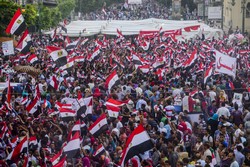Historical, cultural and social reasons behind the Arab Spring
The Arab Spring caught the world by surprise, and was portrayed by the media as a spontaneous, infectious uprising sweeping several Arab nations. However, the reasons behind the Arab Spring go back many years and involve many complex considerations. The EU-funded SPRINGARAB (Social movements and mobilisation typologies in the Arab Spring) project analysed the uprisings of 2011 and underlying dynamics, with particular focus on North Africa. It looked at the social movements that emerged from the revolts and at the fluctuating degrees of liberty that ensued. Beginning in Tunisia and moving on to Egypt and then Libya, the uprisings brought unprecedented liberty and democratic expression to the region. The project team examined the historical component that led to these changes, as well as the sociological/anthropological component. It then conducted a comparative analysis with other contexts and nations. The analysis showed that the transformations were in part inspired by the disappointment linked to nationalism in the late 1970s, which in turn had emerged from post-colonial sentiment. The uprisings’ youth component and how it was communicating using social media is also pivotal, keeping in mind that over 70 % of the population in the Arab world is below the age of 30. Noteworthy also is women’s voice and role in protests, a relatively new phenomenon in the region. In addition, a new repertoire of needs had emerged from the region, fuelled by flagrant wealth inequalities and unemployment. Increasingly underprivileged citizens have been demanding social justice, dignity, cultural rights and rising religious expression in a generally repressive secular environment. The use of social media to express these issues is especially poignant. These and many other determinants lying behind the Arab Spring were carefully explored within the project. SPRINGARAB findings were disseminated in over 50 articles, 6 books, several other publications and the media, clarifying issues and misconceptions surrounding one of the world’s most important geopolitical transformations in recent times.







